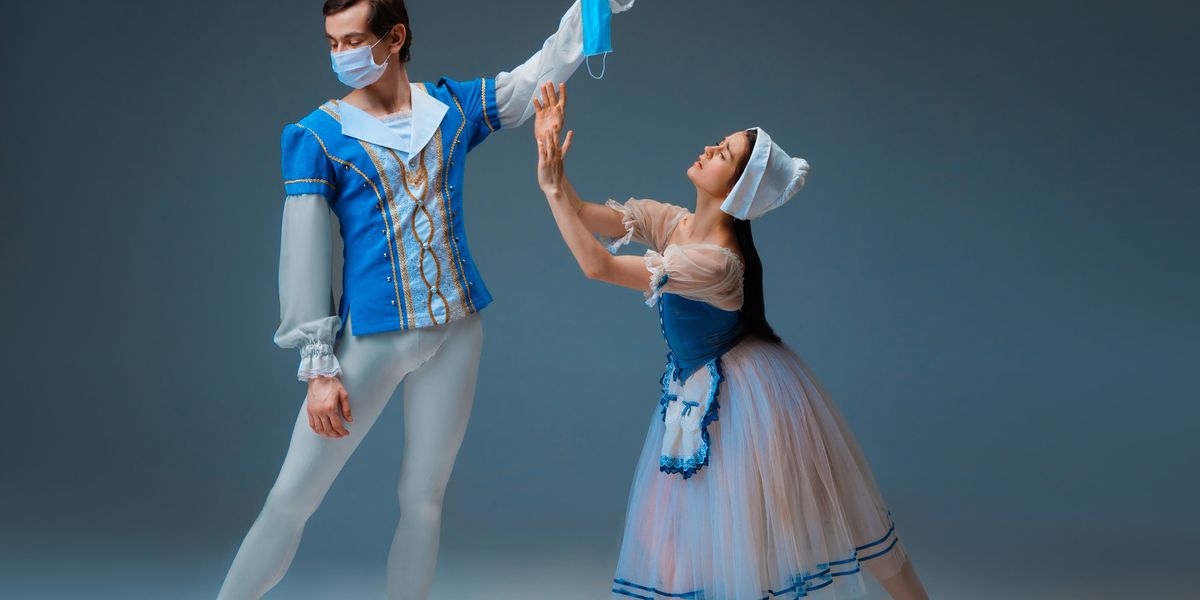How to Dance in a Face Mask
There’s a new must-have accessory for the dancers who’ve begun to venture back into the studio. Face masks are essential to protect your teachers and fellow dancers (not to mention their families) from coronavirus. But they definitely make dancing more complicated.
How can you prepare for—and adjust to—the new masked normal? Here’s practical advice from Dr. Steven Karageanes, a primary care sports medicine specialist who’s worked with the Rockettes and “So You Think You Can Dance,” and Anna Dreslinski Cooke, a Chicago-based professional dancer who has experience dancing in cloth masks, disposable masks, N95 masks, and face shields.
What to Expect
There’s no way around it: Dancing while masked is uncomfortable, especially at first. That discomfort will vary depending on how hard you’re dancing and which mask you choose. Cooke recommends steering clear of the N95 style, which is restrictive (and should be reserved for frontline workers if possible). Instead, opt for a homemade cloth mask. “I knew the N95 mask would be difficult to breathe in,” says Cooke. “But I’d done some indoor biking in a face mask and felt fine, so I anticipated that a homemade cotton mask would be a little bit easier.”
When you start to sweat and breathe heavily—due to a warm studio, your own exertion, or both—the mask fabric will cling to your face, making your breathing feel more labored. “Especially with disposable masks, moisture from my breath would soften the fibers, so the mask would start to break down and not hold its shape anymore,” says Cooke. To relieve this sweaty situation, bring a spare mask that you can swap in halfway through class or between classes.

How to Mask Better
Speaking of spares, you’ll want to invest in several masks, so that you can wash them between each wearing. “The last thing you want is contact with virus that’s on the surface of your mask,” explains Karageanes. “Plus, sweaty masks can grow other organisms as well.”
Some good news: None of the masks that Cooke tried moved around or slipped much while she was dancing. If you do need to adjust your mask for whatever reason, try to touch only the elastic ear loops or the ties that fasten at the back of your head. “Every time you bring your hands to your face, even with your mask on, it’s a risk,” says Karageanes.
Speak Up While You Mask Up
If you have asthma, cystic fibrosis or any other preexisting respiratory condition, it’s essential to advocate for your own health and safety while masked. Cooke, who has mild asthma, is now making sure to hit her inhaler before each in-mask studio session: “You might think you can get get through it, but safety comes first.”
Even if you’ve never had trouble breathing before, you should stop immediately if you feel faint, dizzy, or start to hyperventilate while dancing in a mask.
Your studio might have already established rules about what to do when you need this kind of break. If not, “Put up your hand, walk off to the side and rest for a moment—preferably without removing your mask,” says Karageanes. He suggests taking child’s pose, kneeling on all fours or just sitting down until you feel better. Your teacher won’t think you’re weak or lazy—on the contrary, your feedback will help them set the right pace for class in this new era of dancing while masked.
Deep Breaths, Everyone
Those who cross-train on a regular basis may find dancing in a mask easier than those who aren’t as well-conditioned, Karageanes says. If you’re preparing to return to the studio, add more steady-state cardio to your routine now, which could help you acclimate to masked dancing.
While dancing in a face mask won’t be comfortable or easy, it’s also a must. “We’re all going to get through this together,” says Cooke. “We might even end up a little bit more fit—or at least better at dancing through it, no matter what ‘it’ is.”




